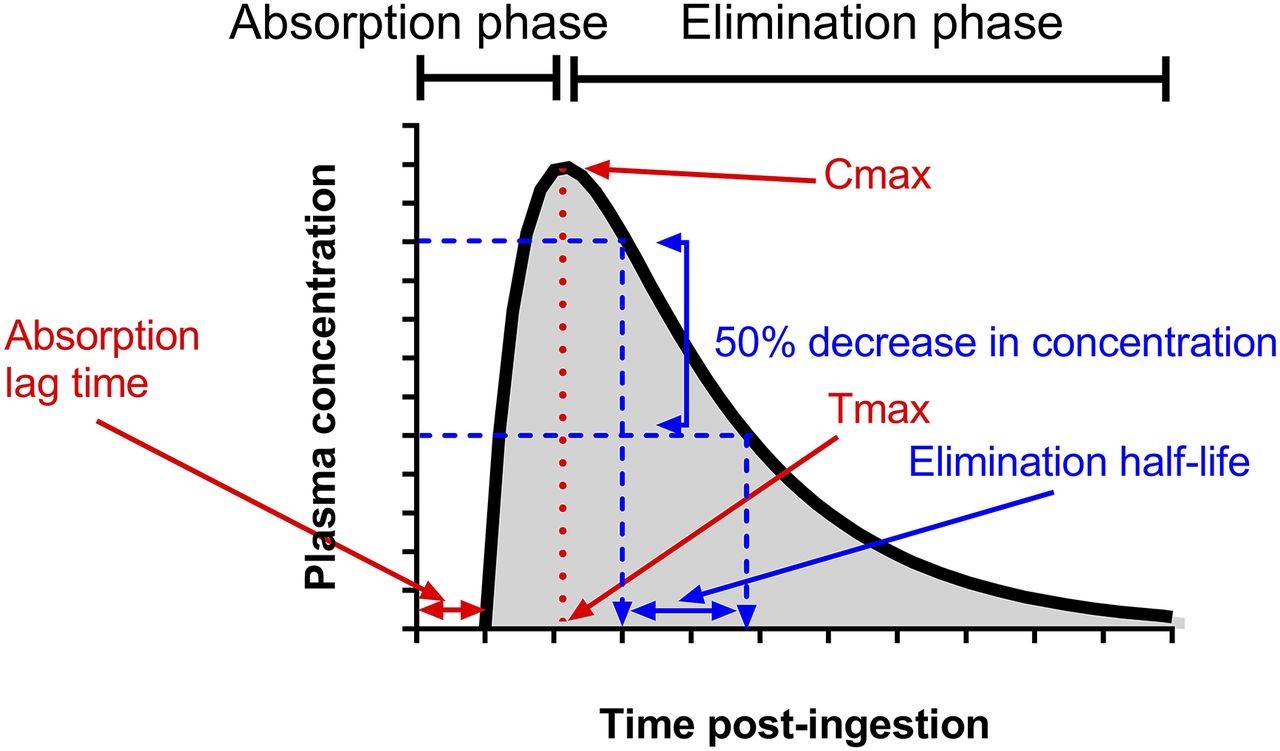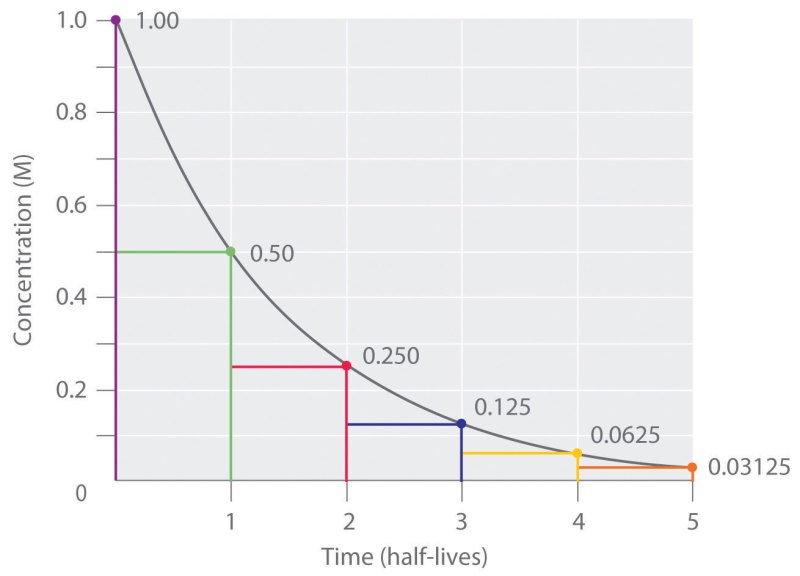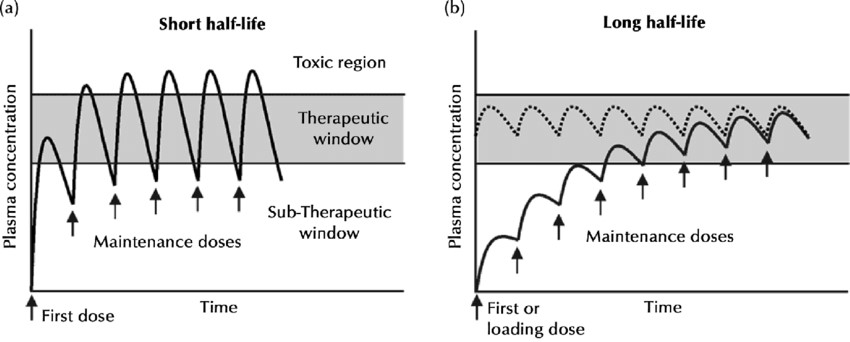Your shopping cart is empty!

One of the issues regarding the use of anabolic steroids is the lack of high-quality information about their pharmacology. Since their use in sports is not legally allowed, it also means that users cannot consult a doctor or a pharmacist. Therefore, one of the best ways to use steroids safely is to learn the basics of pharmacology.
How fast does and drug kick in, how long it works, and how long it stays in the body are some of the things studied in drugs' pharmacokinetics.
There are four phases of pharmacokinetics, and they can be remembered by memorizing the acronym "ADME."
It means that most injectable steroids will start acting in minutes, while oral steroids may take much longer. However, it is worth knowing that it takes much longer for steroids to achieve their maximum activity.
To understand when does any steroid achieves its maximum activity, one needs to understand the concept of half-life.
The half-life of the drug is the time in which 50% of the drug has left the bloodstream. As one can understand that if a drug has 6 hours half-life, it means that in 6 hours, half of it has already left the bloodstream. It also means that the drug achieves its maximum concentration in the blood in 2-3 hours (Cmax, as shown in the diagram below) before its concentration starts falling.
It also means that drugs with a longer half-life may take much longer to achieve maximum concentration.
It indicates that short half-life results in faster action, more predictable results, lower risk of toxicity. However, on the downside, one needs to take much more dosages, which may not be comfortable or even practical in many cases, like injectables.
On the other hand, a longer half-life means a longer duration of action, fewer dosages. But such drugs take a longer time to achieve Cmax.

Understanding half-life is more complex than it may seem. People may wrongly assume that if the half-life of a drug is 6 hours, then all of it may be removed from the body in 12 hours. It is absolutely wrong assumption. In fact, it will take several times of half-life for complete elimination of the drug (4 to 5 times of the half-life). It explains why a drug with a very short half-life, like few hours, may still be detected in blood tests after several days.

Since half-life and complete elimination of drugs are two different things, it means that multiple dosages result in drug accumulation. It also means that any drugs achieve their maximum action only after 3 to 5 dosages.
Just take an example of testosterone enanthate, which has a half-life of about 7-10 days. When taken weekly at the dosage of 500 mg, it may reach its peak in a couple of days. By the end of the week, half or a little more of it has been removed from the body. Thus, the remaining dosage in the body is just 200-250 mg. Now, when a person takes the next dosage, it will result in a bigger peak of 700-750 mg (500 mg from the new dosage and 200-250 of what is remaining from the earlier dosage). It means that by the third week, almost 800-900 mg of it may start circulating in the blood. This increase or accumulation does not continue forever, and a stable state is achieved after 3 to 5 dosages (see figure 3 below).

It means that to understand how fast any drug will start acting, when will the first dose achieve peak, and how consecutive doses will help all depend on the half-life of the drug. Thus, just by knowing the half-life when can know the most essential things about drugs and steroids.
Before looking into the half-life of most commonly used steroids, it is vital to understand one more concept. Half-life is not a constant thing, and it varies between individuals. Thus, for testosterone enanthate, the half-life is 7-10 days. It means that it may have a shorter half-life in some individuals with faster metabolic rate and good liver function. Liver and kidney diseases increase the half-life of the drug. Thus, those living with ailing liver or kidney must use steroids at lower dosages. Further, stacking may also influence the half-life. Using multiple steroids or combining them with other medications may slow down the metabolism of individual steroids resulting in a prolonged duration of action.
Drug or Steroid Name | Estimated half-life |
Injectable steroids or Depot forming steroids | |
Deca-durabolin (Nandrolone decanate) | 14 days |
Finaject (trenbolone acetate) | 3 days |
Primobolan (methenolone enanthate) | 10 – 11 days |
Sustanon or Omnadren | 15-18 days |
12 days | |
7-10 days | |
4-5 days | |
1 day | |
Winstrol (stanozolol) | 1 day |
14 days | |
2 days | |
10.5 days | |
NPP (Nandrolone phenylpropionate) | 5-7 days |
Oral steroids | |
Anadrol / Anapolan50 (oxymetholone) | 8 to 9 hours |
Anavar (oxandrolone) | 9 hours |
Dianabol (menthandrostenolone, methandienone) | 4.5 to 6 hours |
4 days | |
Winstrol (stanozolol) | 9 hours |
12-13 hours | |
16 hours | |
9-10 hours | |
Ancillary drugs | |
1.5 days | |
5 days | |
Nolvadex (tamoxifen) | 9-12 hours |
18-22 hours | |
3-5 hours | |
1 hour (up to 14 hours of active metabolite) | |
10 hours | |
20-30 minutes (9-17 hours biological half-life) | |
Not known, estimated at 23-24 hours | |
To conclude, by understanding the half-life of steroids, one can learn a lot about how they behave in the body, how soon they kick in when they achieve maximum effectiveness, and how long they stay in the body. However, it is vital to understand that in practice, things are more complex. Multi-dosing and stacking may considerably increase the drug's half-life (due to higher concentration in the blood). In some cases, chronic use may increase half-life by several times like for Nolvadex, it is 9-12 hours for the first dose, but chronic use may increase half-life to 5-7 days, and thus it may keep acting for a couple of weeks after discontinuation.
There are other factors to understand, too. Most drugs produce active metabolites. That is, they are transformed in the liver to a different kind of drug. That is why Sibutramine may keep working for a day or even more, despite a half-life of just 1 hour. In other cases, like that of HGH, it keeps acting much longer due to its effect on various body tissues. In short, most anabolic steroids and ancillary drugs may keep working for a few weeks, even on discontinuation.